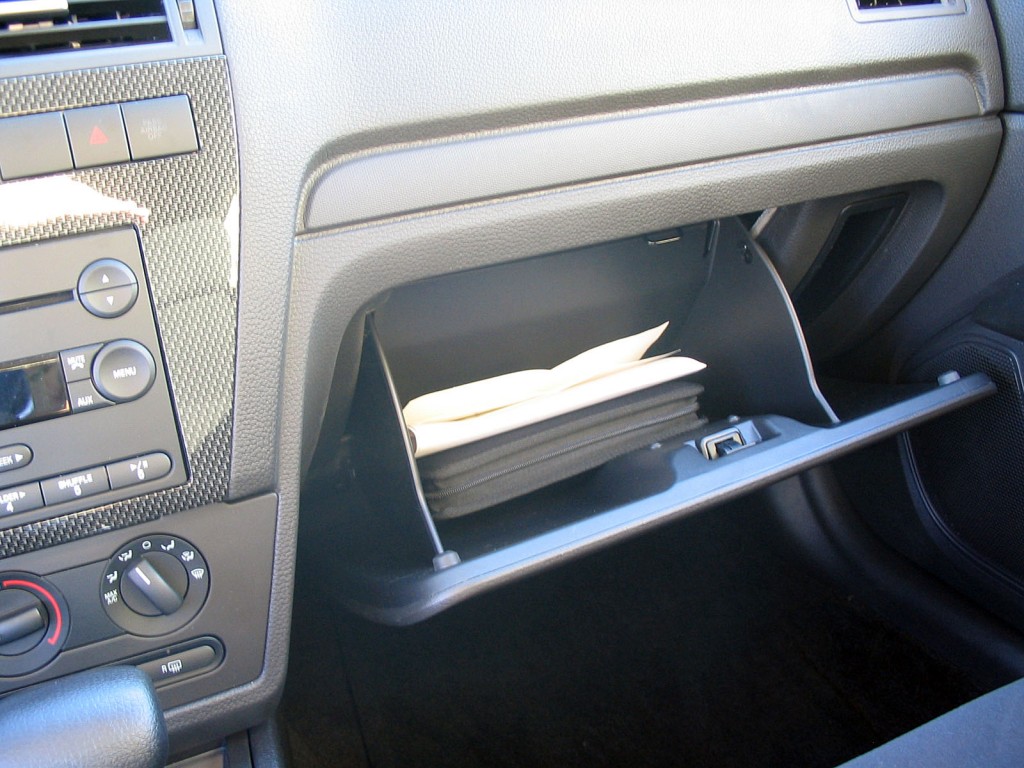Glove boxes are special compartments that automotive manufacturers have built into cars and trucks for almost 100 years. Some are just an opening in the dash above the front passenger’s feet but most have doors that open/close with simple twist or push of a pushbutton latch. Today most glove boxes can be locked so valuable objects can be safely stored.
The name is derived from the original purpose of the compartment – to store gloves. You see, in the early days of motoring, many models of cars were open; meaning that they didn’t have tops, or they had partial convertible tops. With vehicles like these, a driver’s hands could be subjected to the cooling effects of fast moving air and this could get uncomfortable quickly. Picture driving a snowmobile.

Automotive historians trace the beginnings of glove boxes back to the Packard Motor Company. In the sales literature for their 1900 Packards, the following text could be found; “The body of the Packard carriage shows the best possible coachwork and upholstering. Instead of a leather dash, there is a boot or box forming part of the dash. This provides ample space for parcels, waterproofs, etc.”
Interestingly, the term “glove box” is not universal by any means. In the Northwest United States, glove boxes are called “jockey boxes”. In Britain, they are commonly referred to as “cubby holes.” An alternative term in western society is “glove compartment.”
Over the years, the original purpose for glove boxes has evolved. Gloves are not necessities anymore but having a predictable spot in a car to store things is still demanded by the motoring public. Today, glove boxes have become the standard location to store important automotive documents, such as owner’s manuals, car registrations and other things.
Over the years, glove boxes have evolved. For several decades, many glove boxes had internal lights that automatically turned on when the box was opened. This could be a tremendous help to those who needed to dig around in the box at night to retrieve documents or other items.
In the 1960s and 1970s, many glove boxes had an embossed area on their doors so that when they were folded down, cups could be placed on the door. Unfortunately, these shallow impressions did not stabilize cups very well when vehicles were being driven. It is a logical conclusion to say they these early attempts at liquid refreshment stabilization lead directly to the design and implementation of now ubiquitous automotive cup holders.
And glove boxes have gone high-tech too. In the 2008 model year, Dodge installed “Chill Zone” glove compartments in its Avenger sedans. The Chill Zone was a large refrigerated beverage storage bin housed in the passenger-side upper dash. It had multiple folding doors and could hold as many as four 12-ounce beverage cans.
Nissan is also evolving the glove compartment on some of its models. Targeting younger drivers, the Rogue crossover utility vehicle and Sentra sedan both have glove compartments deep enough to swallow laptop computers. This capability is designed to assist drivers who want a safe and secure place to secure their laptops when they are driving.
As for the future, it’s hard to tell where we might see the glove box evolve. As with all things automotive, the only constant “is change itself” so we will to have to be patient and see.
Thanks to: Metro Kia




